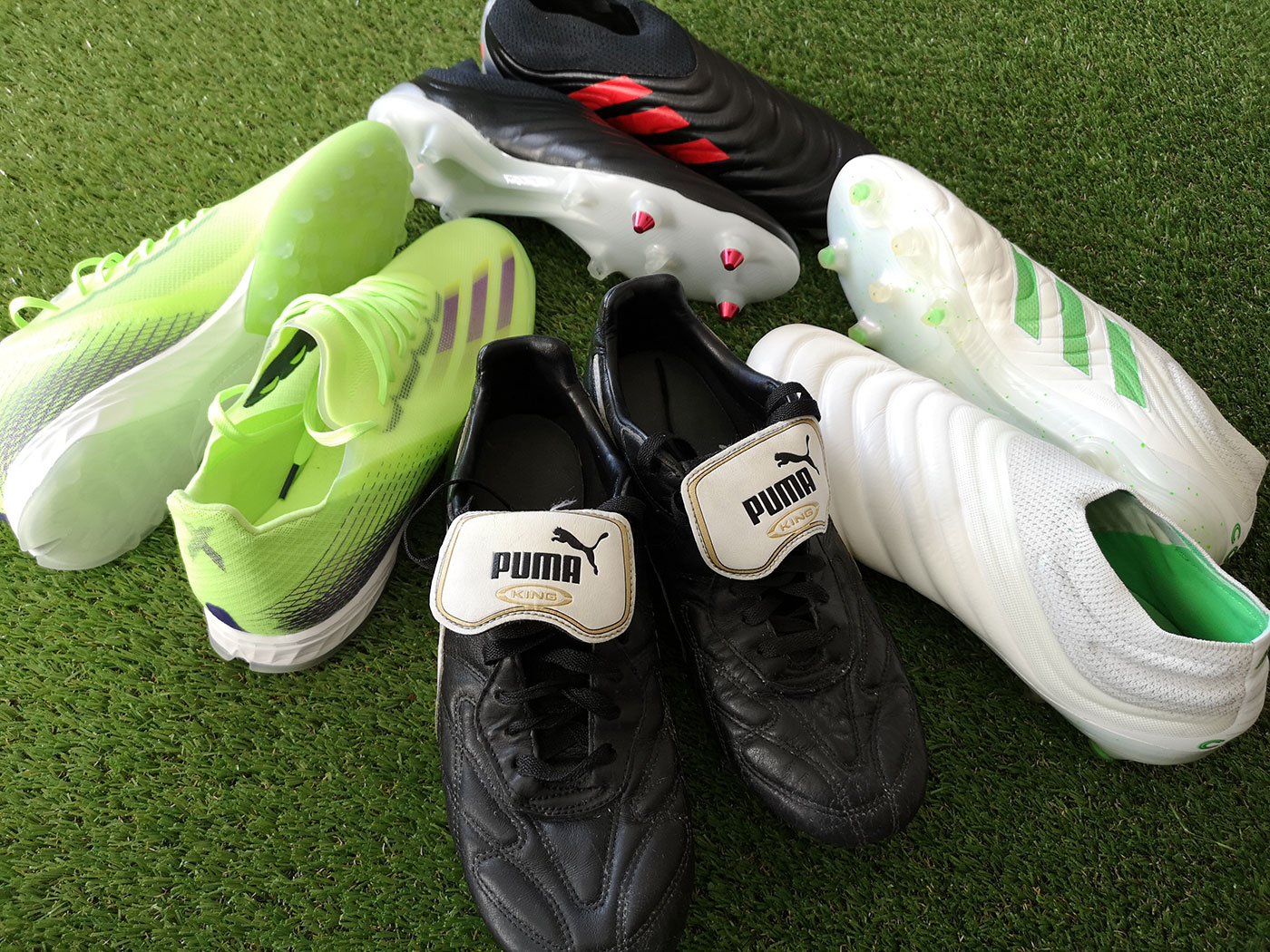
Players’ guide to football boots and soccer cleats
As an avid soccer player for most of my life, I’ve gained lots of experience I would like to share. When it comes to purchasing football boots, (or soccer cleats as we like to call them in Canada), I’ve learned a lot through trial and error. Outdoor soccer is impossible six months of the year where I’m from. That makes indoor footwear for soccer, just as important as gearing up for play in the great outdoors. This article will inform players looking for new footwear, what to look for, and what to avoid. And that really depends on the surface and weather conditions. Not everyone can afford to purchase the latest footwear worn by professional players. So I’ll also try to point out ways for readers to get the best value for their hard-earned money.
Choosing outdoor football boots and soccer cleats
Nothing beats playing a game of soccer outside. That’s how football was designed to be played. The type of field surface and weather conditions can have a dramatic impact on every aspect of the match. This is why proper footwear can give you an edge in a match. Without proper thought to footwear, you could slip, or even worse, injure yourself.
Firm ground soccer cleats and football boots (FG)
The most common form of soccer cleats used in dry and normal conditions are FG cleats, short for Firm Ground. Typically you will see an FG imprint on the stud plate. FG cleats are the most widely used, and oftentimes the only option you’ll see in North American sporting goods stores. For normal grass surfaces, FG cleats will work great. On a dry grassy pitch, FG is the ideal type of footwear. Most players also wear FG cleats on wet and muddy grounds, as well as artificial grass fields. However, as I’ll discuss, it’s not always the best choice.
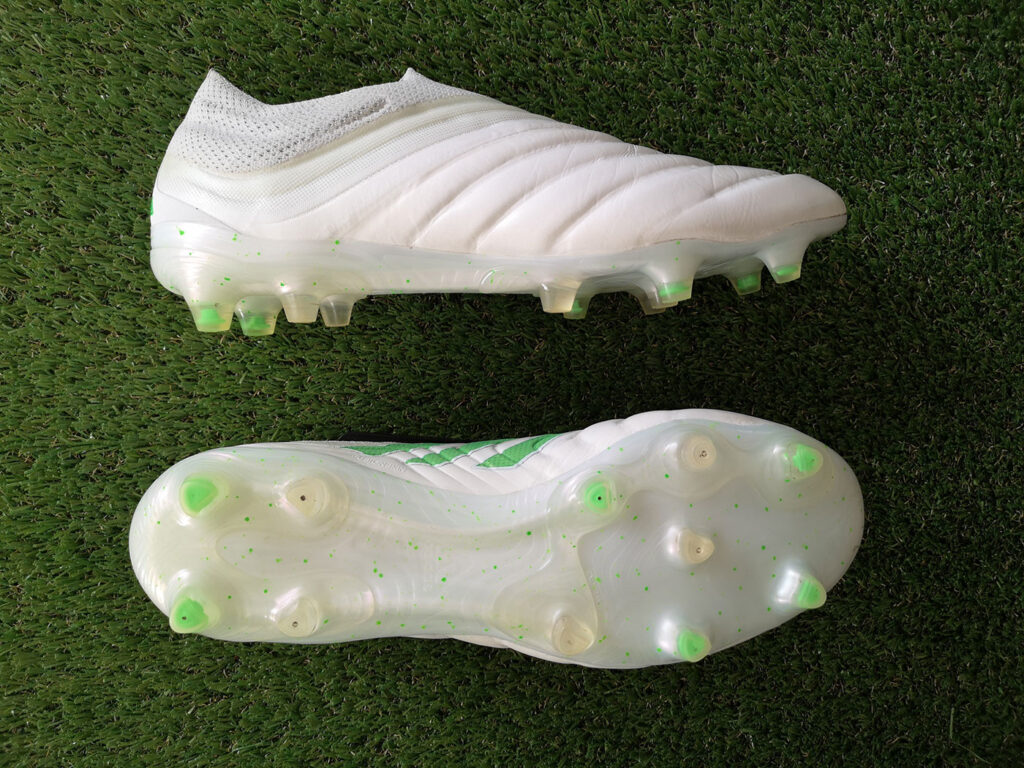
Firm Ground Cleats
Soft ground football boots and soccer cleats (SG)
In Europe, it’s more common to also find SG cleats or Soft Ground cleats. SG cleats will have longer (usually screw in) studs in place of the back two of the four heel studs. There will also be four longer screw-in studs, in the front part of the soleplate. The reason for longer studs is to penetrate slippery or wet ground better, you will better traction. Most professional players in Europe’s top leagues will use SG cleats regularly. Many leagues water the pitch before and at halftime of matches to make for a faster and softer surface. For most recreational players SG cleats aren’t necessary. And they should only be used on natural grass surfaces that aren’t too firm to avoid injury. Never wear SG cleats on artificial grass or turf surfaces. This will cause damage to the field, and can easily injure players wearing them.
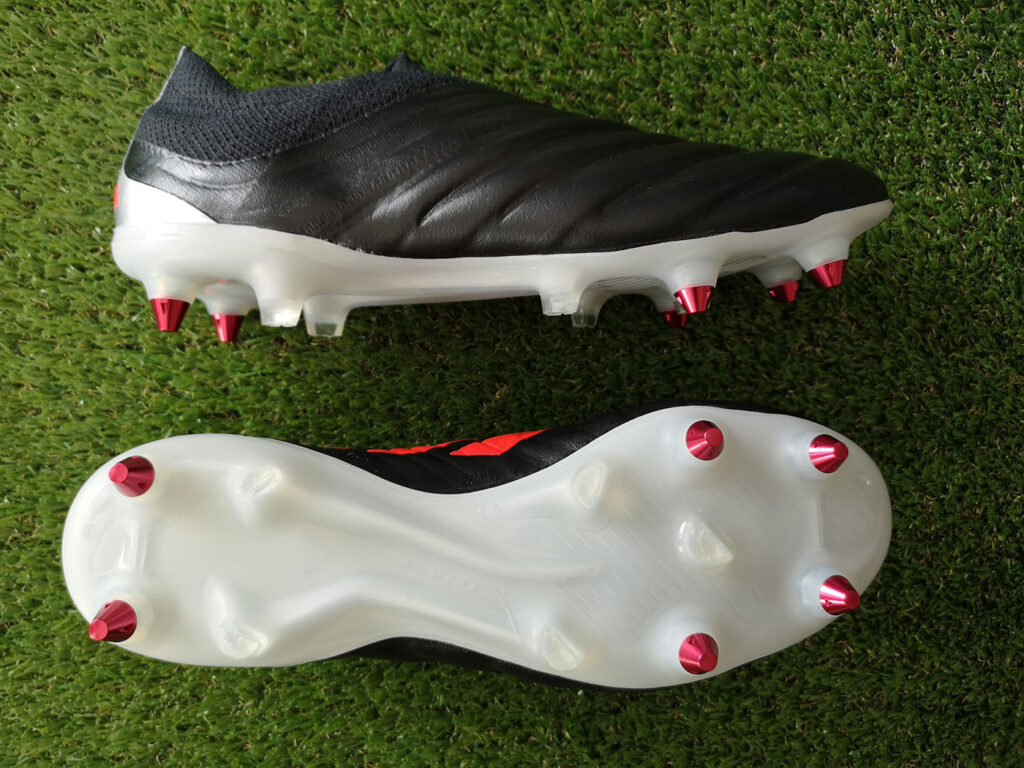
Soft Ground Cleats
Artificial ground soccer cleats (AG)
With the advent of artificial grass fields over the last several years, soccer cleats made specifically for this purpose have become more widespread. Many companies now label their cleats as suitable for FG and AG and will designate them as so. However, there are differences in the way true AG cleats are made. AG cleats will have more studs than FG cleats. AG cleats also use shorter, usually conical studs, which ensure they will not penetrate the artificial ground.
- Soccer boot cleat comparison side by side
Turf cleats (TF)
Turf cleats are designed for older generations of artificial surfaces. Almost like a carpet, older generations of artificial turf aren’t as forgiving as newer generations of artificial grass. Turf cleats will have the smallest and shortest rubber studs. And there will be more of them distributed throughout the soul of the shoe. When playing on older generations of turf, it is unsafe to use any other cleats than turf cleats. I like to use turf cleats even on newer generations of artificial grass. However, when using them outdoors on a wet artificial grass pitch, it becomes slippery. In that situation, traction will be improved on artificial grass by using FG or AG cleats.
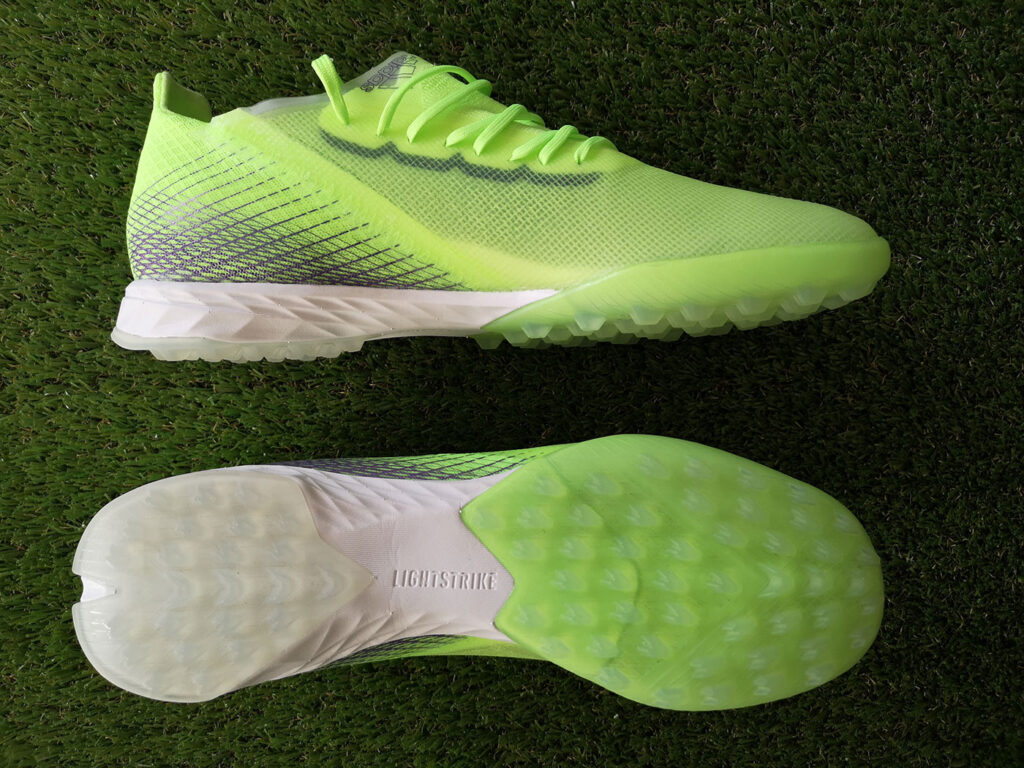
Turf Cleats
Multiple ground cleats (MG) and hard ground cleats (HG)
Another type of cleat you will find marketed is MG which is suitable for multiple grounds. I don’t see these often, however, they are typically quite similar to the FG cleats. They are also more suitable for synthetic or artificial grass surfaces. Also, some companies label their cleats as suitable for HG or hard ground, which is the same as FG or firm ground.
The challenge of artificial grass surfaces
While football is always best played on real grass, artificial surfaces have provided more opportunities to play. I’ve been fortunate enough to play indoors throughout the winter on artificial grass surfaces, and have learned a few things to pass on. Firstly, playing on artificial grass can be very hard on the body. Most players wear the same FG cleats that they would on an outdoor pitch. However, that’s not always a good idea.
Wear a proper insole
If you are wearing FG cleats on an artificial grass surface, make sure you have a decent insole. Using an insole that doesn’t provide you with adequate protection can lead to long-term injury. It’s best to remove a worn-down foam insole and replace it with something more suitable. Pressure points from hard studs on artificial grass can cause a lot of pain. I’ve experienced so much pain, I found it hard to walk the next day after a game. Using a gel pad heel cup helped me alleviate the problem while still wearing FG cleats. Using proper insoles with AG cleats would be the ideal situation for an artificial grass field.
Or just use rubber turf cleats
After playing a full 90 minutes on an artificial grass field, you will notice how much harder it is on your body compared to playing on natural grass. One way I’ve coped with that is by using turf cleats. The traction is not nearly as strong as playing with FG cleats or even AG cleats. However, the lack of pressure points helps to reduce body pains from playing on artificial grass. Since switching, I’ve found my recovery time the next day after a match is much easier.
Bladed cleats vs conical cleats
Another thing to be aware of while playing on artificial grass surfaces with FG boots is the shape of the cleats. Round conical cleats are a better option on artificial grass than wider rectangular or triangular-shaped bladed cleats. Bladed cleats are designed to provide a higher level of traction than conical cleats. They often have them arranged in opposing directions around the soul plate to add stability. It’s more likely that extra traction can lead to injuries on an artificial surface than with round cleats.
Choosing indoor soccer shoes
Indoor soccer shoes are not as complicated as choosing proper outdoor cleats. When playing indoors on a hard surface you don’t worry about opponents’ cleats penetrating the top of your foot. That’s why a lighter shoe and a thinner upper can be advantageous.
What to avoid with indoor soccer shoes
Popular brands will produce many sneakers or trainers stylized like football boots. However, they are not all meant to play competitive soccer with. Sneakers like the Adidas Samba, are based on a design of older generation football boots, yet many of them are not purpose-made for soccer. You can play in them, however, they aren’t all designed for the rigours of a football match. So they might wear out quickly.
Avoid playing in TR shoes
I recently purchased a pair of Adidas Predator 18.1 shoes online from a well-known sporting goods store in Canada. They sell popular sneakers, as well as football boots. These sneakers or trainers were listed online as soccer shoes. After playing in them I knew something wasn’t quite right as they seemed oddly designed for a high-end soccer shoe. So I looked up this review of them here: Soccer Reviews For You. He says to check if the box lists the shoes as TR, (short for Trainer) next to the model number. If that is the case (which it was), he states they aren’t ideal for playing competitive soccer. They are nice sneakers though, and I got them at a price that was ultimately too good to be true.
Choosing the best value soccer cleats and football boots.
My opinion, (based on spending countless hours looking at soccer cleats and shoes online), is that Black Friday is the best day of the year to shop for new footwear. New releases generated throughout the year are always the most expensive. If you find a pair of football boots you want, and they’re a new release, keep an eye on them. Eventually, you will find them on sale. It’s not hard to find football boots sold at half price when they’ve been out for a year or more. So just be patient if you’re looking for the best value.
The difference between high end and takedown models
With so many options to choose from, it’s a daunting task to distinguish between high-quality football boots and lower-quality takedown models. Every company produces high-end and lower-end boots, usually within the same silo, which makes it confusing.
Nike
If you are buying Nike cleats the top-end models that the professional players wear will be called the Elite line. The Pro version will be a step down from that, the Academy model will be even lower quality. The Club models are the cheapest football boot you can get from Nike.
Adidas
With Adidas, as well as some other brands, the top-end model will be known as the .1 model. Adidas also makes high-end laceless boots and designates these as + models. These are typically more expensive than boots with laces. The best quality takedown model is the .2, whereas the .3 and .4 models are lower quality takedown models.
Are leather football boots and soccer cleats better quality?
This depends on what you are looking for. Kangaroo leather or K-leather is what most companies are using now for leather football boots. If you like a soft touch with more protection leather is the way to go. Leather will also mould to your foot better than synthetic uppers. However, leather boots are heavier than boots made from textile or synthetic materials. And that’s why they aren’t the preferred option for most people. Typically, more defensive-style players tend to use leather cleats although there are always exceptions to that. Leather boots will last longer if you aren’t playing in wet or rainy conditions, so keep that in mind.
Will spending more money get you a longer-lasting football boot?
The short answer is yes. Many years ago it was typical for me to purchase one pair of cleats every year. I never really gave much thought to what I was buying, other than looking for a good price and fit. Then one year I decided to purchase an Elite model boot, thinking I could get two years out of them. I would then be spending the same as buying a new pair at half the price every year. However, I saved even more money by not purchasing another pair of football boots for nearly five years! I also had a much more comfortable experience using them.
Recommendations
Based on my personal experience I like to have multiple pairs of football boots available, depending on the conditions. This is the best way to ensure you will extend the life of your football boots. I love playing in high-end leather boots. So to make them last longer, I avoid playing in the rain with them. Under wet and muddy conditions I prefer a synthetic material. I feel it doesn’t soak up nearly as much water as leather or textile-based uppers. Also if you are playing on artificial surfaces it will wear your football boots down much faster. So I prefer to use a turf shoe, or one specifically designed for an artificial surface.
I hope my experiences will help you navigate the world of football boots and soccer shoes more effectively. Please share with me any of your experiences and thoughts in the comments below.




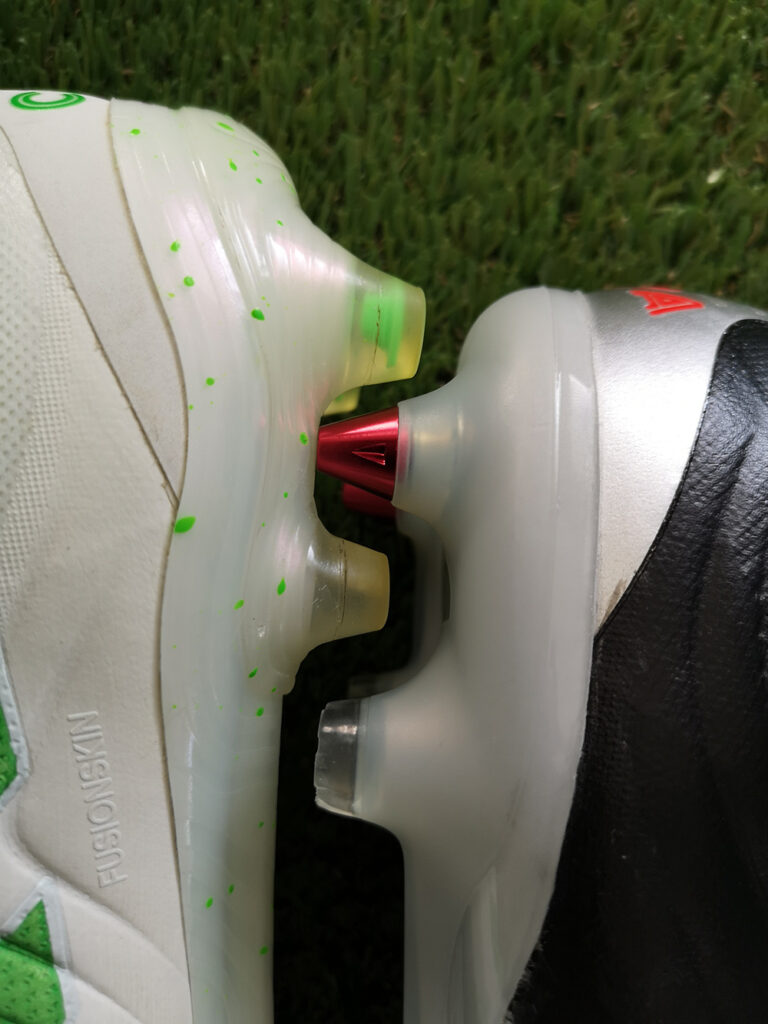
Rosie
Whoa! Those PUMA kicks are awesome!
Top World Football
Thanks, I bought them off my bro! Sweet deal 🙂